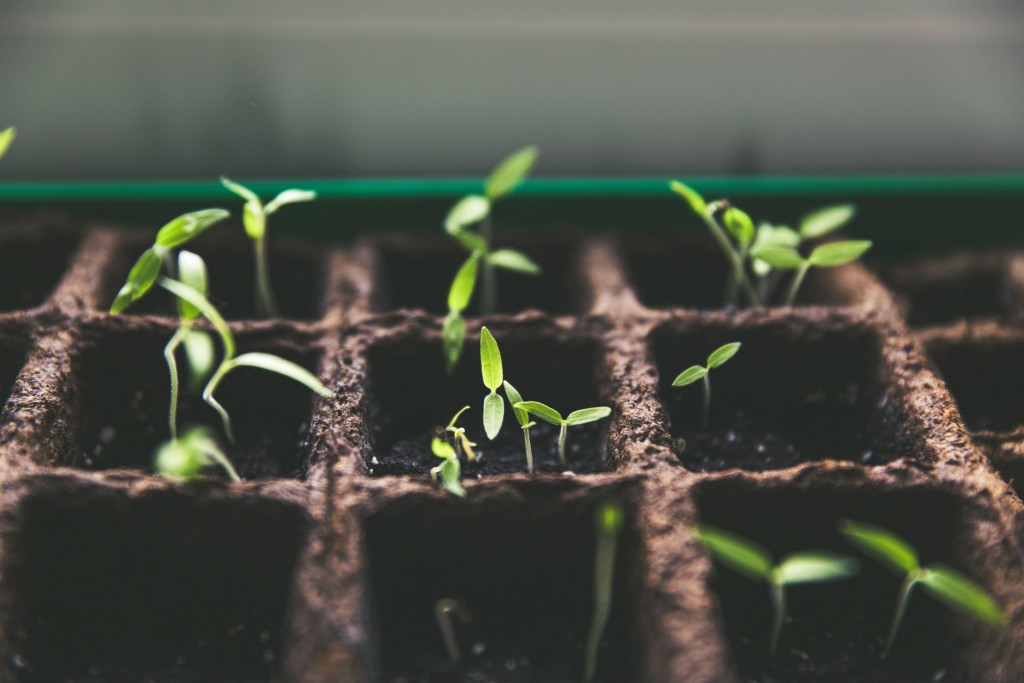
America has a problem. Almost 45% of all waste sent to landfills is foodstuffs and food packaging, and 4 to 10% of food purchased at the checkout won’t don’t even make it to our plates. This all makes for a pretty depressing reading, especially since there are life-threatening food shortages in all-too-many countries around the world. With 33 million tons of food making its way to landfill each year (an amount that could fill the Rose Bowl Stadium each and every day) it’s clear that the situation is grave – for which, we put forward a single, simple solution – a home compost. While we know that even the most hardened of planet lovers would presume this difficult to set up and pretty disgusting to manage, the truth is that it really couldn’t be much simpler. So here’s our strictly ‘yuck-free’ guide to overcoming your food wastage – in 5 straightforward steps for a compost that is suitable whether you live in an apartment or a home with a huge backyard.
5 Steps for a ‘Yuck-Free’ Compost Suitable for Any Home
We’ll let you in on a secret – this isn’t any old compost tutorial… this is an introduction to Bokashi composting. This Japanese approach to composting is roughly translated to mean “fermented, organic matter” or “shading off, gradation”.
The key to this type of composting is that it involves an airtight container (which then makes it ideal for composting either inside or outside), with no stomach-churning smells involved. This form of compost is ideal for everyday food wastage and can accept fruit, veg, tea bags, and even meat, eggs, and dairy (except milk). Here are the steps for creating your own Bokashi compost…
1. Source an airtight bucket and create your first layer
Bokashi composting requires the layering of food waste, which is then topped with a sprinkling of a ‘carrier medium’ (a special substance that has micro-organisms). Typically these organisms are lactic acid bacteria, yeast, and phototrophic bacteria. Given the ease of setting up and managing a Bokashi compost, the western world has begun to catch on, so much so that you will likely find Bokashi containers and the effective micro-organisms at any large hardware store. Should this not be the case, you’ll most certainly be able to find an online retailer that stocks these products. Whatever bucket you use, it needs to be air-tight, as this form of composting relies on the creation of an ‘anaerobic environment’ (which is a space that’s completely free from oxygen).
2. Add layer upon layer – Until You’ve Filled the Bucket
You’ll continue to add food waste, and then a layer of bran until the bucket is full. At this point, you’ll seal the bucket and leave it for between 10 to 14 days (due to this, you may need to purchase two buckets so that you can rotate them – always with one in use, while another is stored away to ferment).
3. Following Fermentation It’s Time To Get Digging
Bokashi buckets will have a tap at the bottom which will allow you to drain off the liquids, which can then be sprayed onto your plants (this liquid is likely one of the most effective fertilizers there is – far more powerful than the chemically created fertilizer that you’ll find in the shops). The remaining contents of the bucket will have food that has retained some of its original appearance (unlike traditional composting), it also won’t have an earthy smell instead it will have an aroma similar to vinegar. The contents of the bucket can then be dug into your backyard soil (if you live in an apartment, this compost can just as easily be used in your planters or window boxes). You’ll need to leave it a week or so before planting anything in your beds or boxes, as the soil will be acidic and simply kill off any fledgling seeds. Once ready, the soil will be a rich source of nourishment, ideal for growing more fruit and veg!
Home composting can make a significant difference to the carbon footprint of the average household – and it’s no overstatement to say that food wastage has proven the hardest of all modern blights to tackle by green groups and governments alike. When home composting is so simple, demanding just a few minutes’ setup and minimal management, we’re hoping that the Bokashi compost really gains traction – driving down the insane amount of food wastage that will otherwise continue to be sent to landfill. Have more questions? Contact us today!
Last update of the article: 07/31/2020.

About the Author
Jen is your go-to guru for crafting a cozy, green cocoon. 🪴 Her dive into sustainable building wasn’t just about saving the planet—it started as a mission to make family movie nights eco-friendly (and to ensure the popcorn was the only thing getting heated!). With a knack for breaking down the jargon, Jen turns eco-lingo into everyday language. Swing by the Green Living blog for a mix of earth-loving advice and home improvement hacks. Whether you’re just dipping your toes into green waters or you’ve been swimming in the deep end of DIY projects, Jen’s here to guide, giggle, and remind you that every eco-choice is a step towards a planet that thanks you… and maybe even sends a rainbow your way! 🌈

